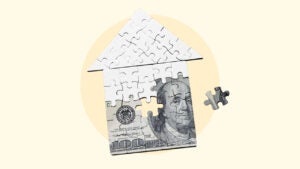Tax lesson for teachers: Educator expenses can be written off




Teachers often reach into their own wallets to cover supplies, snacks for students and other classroom necessities. In fact, teachers spent an average of $610 of their own money on classroom supplies during the 2023-2024 school year, according to DonorsChoose, a nonprofit organization that raises money for classroom needs.
Fortunately, teachers and other educators can get a tax deduction of up to $300 for some of those costs as well as education expenses related to their own professional development.
Even better, they don’t have to itemize to get the tax break. Educator expenses are one of the so-called above-the-line deductions claimed directly on Form 1040 or via tax software.
Who qualifies for the educator expense deduction?
Teachers aren’t the only school employees eligible for the educator expense deduction.
School counselors, principals and aides can take the deduction if, for the tax year, they were employed at a state-approved public or private school system for kindergarten through grade 12, and worked at least 900 hours during the school year.
What items qualify for the educator expense deduction?
Educators can write off unreimbursed costs for:
- Books
- Supplies
- Computer and other equipment (including software and services)
- Supplementary materials used in the classroom
- Professional development programs
The IRS applies its “ordinary and necessary” rule here. An item purchased for your classroom must be considered ordinary — something that is common and accepted in the education profession. It also must be necessary, which the IRS defines as helpful and appropriate, though the item doesn’t have to be required.
Buying a recording of “Death of a Salesman” to help drive home Arthur Miller’s points to your students would likely meet tax muster. But purchasing a new HD television, instead of watching on your school’s working-but-old set, may raise a tax auditor’s eyebrows.
Couples who share education careers can get a double break if they file jointly. However, each spouse is limited to $300 of qualified expenses ($600 total).
What about homeschooling? Sorry, but the tax law specifically states that costs for this type of instruction don’t count toward the educator expenses deduction.
Your tax situation may limit the deduction
In addition to the types of expenses that are eligible, the IRS has set some other restrictions on what’s deductible.
The tax agency says when an educator uses any tax-favored funds to pay for his or her own schooling, those amounts must be subtracted from the total the teacher claims under the educator expense deduction.
Take for example Joe Jones, a high school English teacher who is working toward his master’s degree in literature during school breaks. He cashed in savings bonds to pay his tuition and excluded the bonds’ $150 interest from tax. He also spent $200 for books on Shakespeare to distribute to his 11th-grade students. He must subtract the $150 in tax-free interest from the $200 for the books, leaving him only $50 to claim under the educator expenses deduction.
The same rule applies to nontaxable earnings a teacher gets from qualified state tuition programs or tax-free withdrawals from a Coverdell education savings account.
Learn more
Current tax brackets for 2024 and 2025





